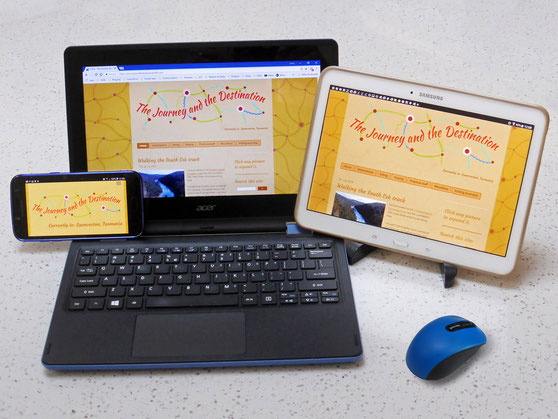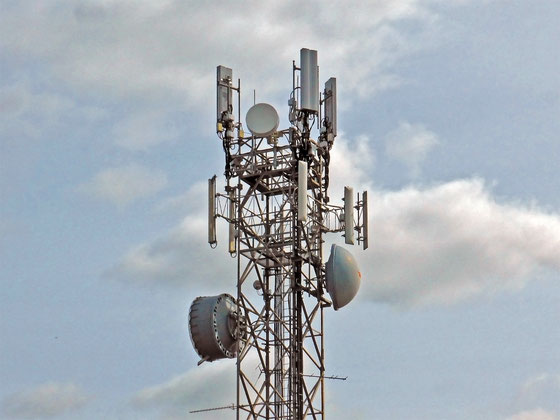Accessing the Internet while travelling
Accessing the Internet while travelling is so useful, convenient, and pervasive that it really is essential for the 21st Century traveller.
Researching for your travels before you go and as you travel, making bookings for just about everything including accommodation, flights, hire cars, restaurants, busses and trains, and entertainment; and communicating for free with people all over the world with voice and video calls, is all just so easy to do with the internet. And, like telephone boxes in a world of mobile (cell) phones, all the previous methods for doing these things are fast disappearing, leaving travellers with no other choices.
So what are the ins and outs of accessing the internet on your device (smartphone, tablet, or laptop) when you’re on the go?
Accessing the Internet
There are four main ways that travellers can access the Internet on their devices; two of these are almost obsolete, so I’ll cover these first and get them out of the way.
Internet café
An Internet café is a shop with lots of Internet-connected desktop computers which you can use for a period of time for a fee. Such a shop may sell coffee and snacks for you to have while you're on their computer, which is why they are called Internet cafés.
Internet café are just about obsolete now – you won't see too many around anymore. What there are, are mostly used for computer gaming, like the one in my picture above.
In 2003, when we were travelling through Britain and Spain, we would seek out an Internet café every few days to frantically (it was expensive) check our email and do banking. Back then, internet cafés were the main means by which travellers accessed the internet. However, there were very few internet-based services for travellers then, so Internet access wasn't so important.
Nowadays, internet cafés are okay if you don't intend to rely on accessing the internet too much – maybe just to check your email every few days and do some banking. (Doing your banking in an internet café is a really bad idea, by the way, because you have no control over the security of the computer.)
There are still a few Internet café around; but, with the modern alternatives described below there is little need for them for travellers. Public libraries around the world still commonly provide this sort of service, and usually for free, although you may have to go through the process of joining the library.
LAN cable
A Local Area Network (LAN) cable is a physical cable that plugs into a socket (LAN port) in your laptop (not your smartphone or tablet, though) to give you access to the Internet.
Back when Internet cafes were popular and common, their service was sometimes provided through a LAN cable for the few travellers who were lugging the heavy laptops of the day around with them. Also back then, hotel rooms also quite often provided an Internet service through a LAN cable in the room, for exorbitant prices. These services were mainly aimed at business clients – In both cases you sit at a desk with your laptop, and plug in the LAN cable plug that’s provided on the desk.
In fact, LAN cables are now mostly only used in businesses, and even in businesses, they are probably going to disappear because Wi-Fi is much simpler to implement, although it’s slower (but plenty fast enough), and less secure. You’ll rarely be offered a LAN cable for your travelling internet connection now. Most laptops still have a LAN cable socket, but the time must be coming when they go the way of the floppy-disk drive and DVD burner and disappear.
One possible advantage a LAN cable connection may have over the other methods of accessing the internet that I will describe is that it can be much faster. However, as I have said, those other methods are usually plenty fast enough, and the limitation of your connection speed is commonly caused somewhere else in the internet, rather than in that last connection to your device.
These previous two methods are now outdated for travellers, and you probably won't ever use them or even find them. Most modern connections to the internet are made using following two methods.
Wi-Fi (wireless local area network)
Wi-Fi uses radio waves to connect your device to a wireless local area network (WLAN) that has access to the Internet. Wi-Fi has a short range: usually over a few adjacent rooms or a localised outdoor area, so to access it you’ll need to be near to its source.
Wi-Fi may be provided in a private home, a small hotel, or a small retail business using a domestic modem Wi-Fi router like this:
Wi-Fi may be available to you in a wide range of types of places: it may be provided by a business such as a coffee shop or restaurant for its customers, a shopping centre (mall), by accommodation businesses such as a hotel or a hostel, within a private home, or by a public service such as a library, or a local council in a limited public area. For example: I connected to a Wi-Fi network to complete my 2015 financial year Australian tax return while sitting in the Enniscorthy Public Library in Ireland, and a few days later I received my Australian Taxation Office assessment using the Wi-Fi network in the Tesco supermarket in Gorey, Ireland.
You can find out more about the Wi-Fi options you will find as you travel, and how to connect to them, here.
By the way:
Wi-Fi (or a LAN cable, for that matter) doesn’t necessarily connect your device to the internet. Wi-Fi connects your device to a wireless local area network (WLAN) which usually has access to the internet; but it doesn’t have to – it may just be connected to other computers such as a server computer and its client computers, so that you can just share files with them. However, in the modern world there are very few wireless local area networks that can’t access the internet. This also applies to a LAN cable connection. Don’t give this too much thought, though, because it will almost never matter to you – I just thought that you’d like to know.
Mobile data (cell data)
Mobile data is internet access that is provided by a tele-communications company through its mobile (cell) phone network. It uses radio waves to connect your device to the same towers that provide mobile phone services, towers like this:
All smartphones, and many tablets, are able to use mobile data, and laptops can be fitted with an adaptor that allows them to use mobile data. Laptops and tablets can also be connected to a mobile-data-connected smartphone, which can transfer data to the laptop or tablet.
Mobile data is available in most developed areas in the world where there is mobile phone coverage.
To use mobile data you need an account with a telecommunications company. If you have a mobile phone you will almost certainly have access to mobile data included in your account package. If you are using a tablet or a mobile data adaptor for a laptop you will need to get a mobile-data-only account with a telecommunications company.
SIM cards
Most devices that use mobile data need a Subscriber Identification Module (SIM) card, like the one that’s in your mobile phone.
The SIM card provides the telecommunications company with information about your account so that it can connect your device.
If you are using a mobile phone to access mobile data, you will use your phone's SIM card – the same SIM card that allows you to make phone calls. If you are using a tablet which can receive mobile data or a mobile data adaptor for a laptop you will use a different, but physically identical SIM card that is only used for mobile data.
If you think that Wi-Fi and mobile data sound confusingly similar, you can find out more about the difference between them here.
Cost and convenience of accessing internet
The cost of these different methods of accessing the internet varies, and costs change all the time, so it’s hard to give cost specifics – you really need to check them out yourself as you need them. However, I can give you some idea of what to expect and what to look for.
Obviously, a good choice is a free Wi-Fi connection that works well and doesn’t need lots of personal details before it will let you connect. Other than that, a Mobile-data internet access is generally more expensive to use than privately owned LAN cable or Wi-Fi network internet access, although it is usually cheaper that a public Wi-Fi network with internet access that you pay to connect to. I haven’t used an internet café for a long time; they were relatively expensive back then and I think they are likely to be more so now, as they tend to be focusses of high-performance computing for playing games.
If you’re going to be in a country for a while it’s likely to be worthwhile organising mobile data just for the sheer convenience. you can commonly get mobile data for a reasonable price, a connection is available almost everywhere as soon as you need it, and it avoids the sometimes tiresome process of finding and connecting to public Wi-Fi networks, although buying a mobile data (or mobile phone) account can be tiresome in some countries, too. You can move around easily with mobile data, too, without having to continuously look for new networks.
Disclaimer
This commentary is based on my personal experiences and impressions – it isn’t the result of an exhaustive study of the ways of accessing the internet. My comments are based on the specific devices that I use, and the circumstances that I encounter as I use them. It may not apply to you, or your equipment, or circumstances.
Over time, this commentary may become out of date, and, while I’ll correct anything I know is wrong, I’m not going to be excessively conscientious about it. So, treat this as a great place to start, but do your own research before committing to anything!
Share this The Journey and the Destination post using your favourite social media:
Would you like to add something, or ask a question? Add a comment below (you can leave the 'Website' field blank):







